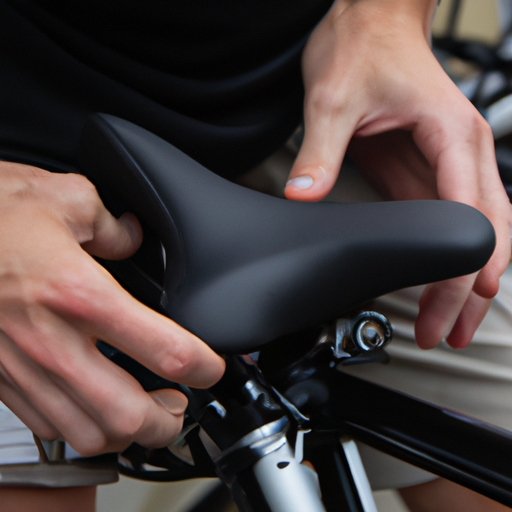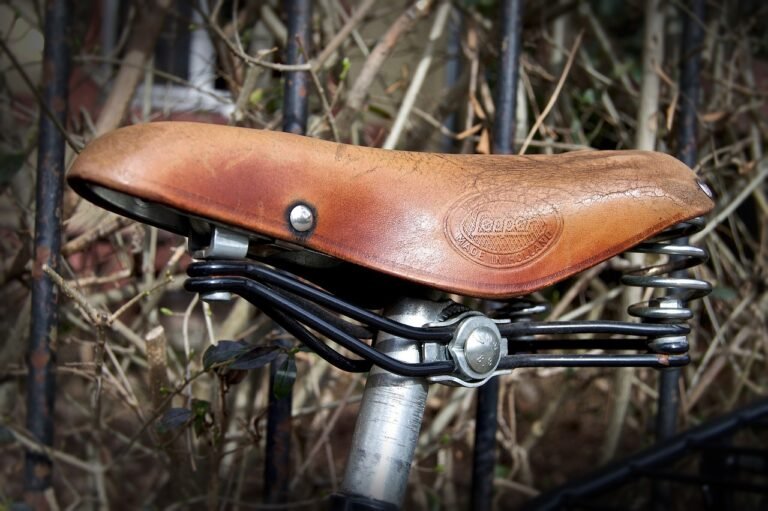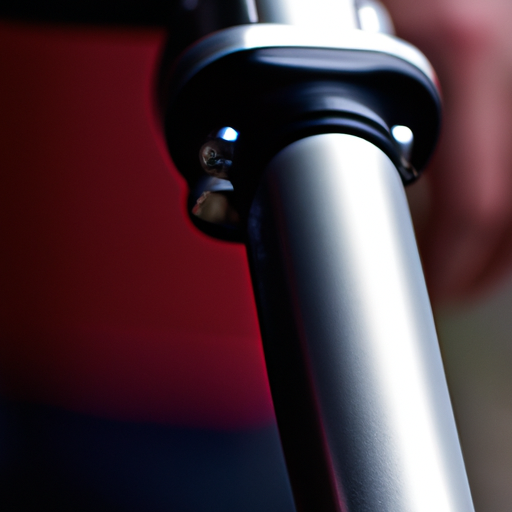What’s The Importance Of Proper Bike Fit For Comfort And Performance?
Have you ever experienced discomfort or pain while riding your bike? It might be time to consider the importance of proper bike fit for both comfort and performance. A well-fitted bike can not only enhance your comfort level, but also improve your performance and prevent potential injuries. So, whether you are a casual rider or a competitive cyclist, taking the time to ensure your bike is properly fitted to your body can make a world of difference in your overall biking experience.
1. Proper Bike Fit: An Introduction
1.1 Understanding Bike Fit
When it comes to cycling, one of the most crucial factors that can greatly impact your riding experience is the fit of your bike. Bike fit refers to the way your body aligns with your bicycle and how the various components are adjusted to accommodate your unique body measurements and riding style. A proper bike fit is essential for ensuring comfort, enhancing performance, and preventing injuries while out on the road or trail.
1.2 The Goals of Proper Bike Fit
The primary goals of proper bike fit are to optimize comfort, enhance performance, and prevent injuries. A properly fitted bike ensures that your body is positioned in a way that minimizes discomfort and pain, allows for optimal power transfer and aerodynamics, and reduces the risk of muscular imbalances and joint stress. By achieving these goals, you can fully enjoy your cycling experience and optimize your overall performance.
2. Importance of Comfort
2.1 Increased Efficiency
Comfort plays a significant role in your cycling efficiency. When your bike is properly adjusted to fit your body, you are able to achieve a more natural and balanced position. This allows for smooth and efficient pedal strokes, as well as improved stability and control. By reducing unnecessary strain and excessive movements caused by an ill-fitting bike, you can ride longer distances with less fatigue.
2.2 Reduction in Discomfort and Pain
Nothing can ruin a bike ride quicker than discomfort and pain. An improper bike fit can lead to a range of issues such as soreness in the neck, shoulders, back, and wrists, as well as numbness in the hands and feet. These discomforts can not only make your ride unpleasant but also hinder your ability to perform at your best. By ensuring a proper bike fit, you can minimize the risk of these discomforts and enjoy a pain-free cycling experience.
3. Enhancing Performance
3.1 Optimal Power Transfer
When your bike is properly fit to your body, it allows for optimal power transfer from your legs to the pedals. The alignment of your body and the bike ensures that the force exerted by your legs is efficiently transferred without any unnecessary energy loss. This helps you generate more power, ride faster, and improve your overall cycling performance.
3.2 Improved Aerodynamics
Aerodynamics play a vital role, especially for road cyclists and those who compete in time trials or triathlons. When your bike is fitted correctly, it allows for a more streamlined and aerodynamic position, reducing wind resistance and drag. By reducing the amount of effort required to overcome these forces, you can achieve higher speeds and increase your overall efficiency.
4. Preventing Injuries
4.1 Muscular Imbalances and Overuse Injuries
An ill-fitting bike can lead to muscular imbalances and overuse injuries. When your bike is not properly adjusted to your body, it can cause certain muscle groups to work harder than others, leading to imbalances and potential injuries. For example, a saddle that is too high can put excessive strain on the hamstrings, while a handlebar that is too low can cause undue stress on the neck and shoulders. A proper bike fit aims to minimize these imbalances and reduce the risk of overuse injuries.
4.2 Protecting Joints and Ligaments
Aside from muscular imbalances, an improper bike fit can also put unnecessary stress on your joints and ligaments. When your bike is not adjusted correctly, it can place excessive pressure on specific areas such as the knees, wrists, and elbows. Over time, this can lead to joint inflammation, tendonitis, and other painful conditions. By ensuring a proper bike fit, you can protect your joints and ligaments and minimize the risk of long-term injuries.
5. Factors Affecting Bike Fit
5.1 Body Measurements
Body measurements play a crucial role in determining the proper fit of your bike. Factors such as your height, inseam length, arm length, and torso length all impact how your bike should be adjusted. For example, a taller cyclist may require a larger frame size and longer components, while a shorter cyclist may need a smaller frame and shorter components. Taking accurate body measurements is essential to ensure a precise bike fit.
5.2 Flexibility and Range of Motion
Your flexibility and range of motion also influence your bike fit. Cyclists with limited flexibility may require adjustments such as a higher handlebar position or a shorter reach to the handlebars. On the other hand, cyclists with great flexibility may benefit from a more aggressive and stretched-out position. Considering your flexibility and range of motion helps fine-tune your bike fit to best accommodate your body’s capabilities.
6. Importance of Professional Bike Fitting
6.1 Expertise and Experience
While it is possible to adjust some bike components on your own, seeking professional bike fitting services can greatly enhance the accuracy and effectiveness of your bike fit. Professional bike fitters have the expertise and experience to analyze your body measurements, flexibility, and riding style to provide a customized fit that optimizes your comfort and performance. They can identify and address any potential issues that may go unnoticed by untrained individuals.
6.2 Advanced Tools and Techniques
Professional bike fitters utilize advanced tools and techniques to precisely measure and adjust your bike fit. These tools include motion capture systems, pressure mapping systems, and adjustable fitting bikes. These technologies allow the fitter to gather data on your body’s movements, pressure points, and alignment, enabling them to make precise adjustments to your bike components. The combination of expertise and advanced tools ensures an accurate and efficient bike fit that maximizes your comfort and performance.
7. Riding Style and Bike Fit
7.1 Road Biking
Road biking requires a specific bike fit that emphasizes aerodynamics and efficient power transfer. Road cyclists typically have a more aggressive riding position with a lower handlebar position and a longer reach to the handlebars. The bike fit for road biking focuses on reducing wind resistance and maximizing pedaling efficiency to achieve high speeds on paved surfaces.
7.2 Mountain Biking
Mountain biking requires a slightly different approach to bike fit due to the nature of off-road trails and variable terrains. A mountain bike fit places more emphasis on stability and control. The handlebars are typically wider, and the rider may have a more upright riding position for better maneuverability. The bike fit for mountain biking aims to provide optimal balance, control, and comfort on rough and technical trails.
7.3 Triathlon and Time Trial
Triathlon and time trial disciplines require an even more specific bike fit to excel in these highly competitive events. With a focus on speed and aerodynamics, the bike fit for triathlon and time trial involves a more aggressive position with a forward-leaning torso and aero bars. Everything from the frame geometry, handlebars, and saddle position is meticulously adjusted to ensure minimal drag and maximum speed.
8. DIY Bike Fit Tips
8.1 Bike Sizing
If seeking professional bike fitting is not currently an option, there are some basic DIY bike fit tips you can follow. Start with the right bike size for your body measurements. Refer to manufacturer size charts to determine the appropriate frame size for your height and inseam length. It’s essential to have a bike that is neither too big nor too small, as it can greatly affect your riding experience.
8.2 Adjusting Saddle Height
Another crucial aspect of bike fit is saddle height. Adjusting your saddle height can greatly impact your pedaling efficiency and comfort. A general rule of thumb is to set your saddle height so that when your pedal is at the bottom of the stroke, your leg is nearly fully extended but with a slight bend at the knee. Experiment with different saddle heights to find the one that feels most comfortable and efficient for you.
8.3 Handlebar Reach and Drop
Handlebar reach and drop can also be adjusted to achieve a better bike fit. The reach refers to the distance between the saddle and the handlebars, while the drop is the vertical distance from the top of the handlebars to the bottom of the drops. Experiment with different handlebar widths, stem lengths, and handlebar heights to find the optimal reach and drop that suit your riding style and comfort preferences.
9. The Role of Bike Components
9.1 Choosing the Right Frame Size
The frame size of your bike is one of the most critical components that affect your bike fit. The frame size determines the overall dimensions and fit of your bike, including the top tube length, standover height, and seat tube length. Choosing the right frame size ensures that your body is properly aligned with the bike, allowing for an efficient and comfortable riding position.
9.2 Importance of Saddle Choice
The saddle is another crucial component that greatly affects your comfort and overall bike fit. There are various saddle shapes, widths, and cushioning options available to accommodate different body types and preferences. Finding the right saddle that suits your anatomy and riding style can significantly enhance your comfort and reduce the risk of saddle-related discomforts and pain.
9.3 Handlebar Selection
Different handlebar shapes and widths can greatly impact your riding comfort and bike fit. Handlebars come in various shapes such as drop bars, flat bars, and riser bars, each designed for different riding disciplines. For example, drop bars are commonly used in road biking and provide multiple hand positions for long rides. Selecting the appropriate handlebar shape and width ensures a comfortable and ergonomic grip, minimizing strain and discomfort on your hands, wrists, and shoulders.
10. The Benefits of Regular Bike Fit Updates
10.1 Changes in Fitness Level
As you progress as a cyclist and your fitness level improves, your bike fit requirements may change. Regular bike fit updates allow you to fine-tune your bike’s position to accommodate your improved strength, flexibility, and riding style. A bike fit update ensures that you are always riding in an optimal position that maximizes your performance and comfort.
10.2 Modifications due to Injuries
Injuries and physical conditions can also impact your bike fit requirements. If you experience an injury or undergo any changes in your body’s physical condition, such as surgery or pregnancy, it is crucial to reevaluate your bike fit. By making appropriate modifications to accommodate your healing process or changing body, you can mitigate any potential discomfort or risk of exacerbating the injury.
10.3 Aging and Body Changes
As we age, our bodies go through natural changes that can affect our bike fit. Factors such as decreased flexibility, changes in weight distribution, or joint stiffness may require adjustments to your bike fit. Regular updates as you age ensure that your bike continues to provide the optimal fit that supports your body’s changing needs and promotes a comfortable and enjoyable riding experience.
In conclusion, a proper bike fit is essential for achieving comfort, enhancing performance, and preventing injuries while cycling. It involves understanding your body measurements, flexibility, and riding style to optimize the alignment of your body with the bike. Seeking professional bike fitting services can provide expertise, experience, and access to advanced tools and techniques that result in an accurate and customized bike fit. Whether you are a road cyclist, mountain biker, or triathlete, ensuring a proper bike fit will help you fully enjoy your rides, improve your performance, and maintain a healthy and pain-free cycling experience. Regular updates to your bike fit also allow for adjustments due to changes in fitness level, injuries, or aging, making sure that your bike continues to provide the best fit throughout your cycling journey. So, prioritize your bike fit and get ready to embark on countless comfortable, efficient, and enjoyable rides.






